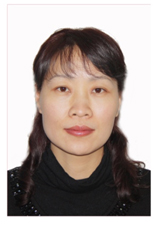Application of Ultra-High Performance Liquid Chromatography Fingerprint with Chemical Pattern Recognition in Quality Evaluation of Bitter Thorn Nectar

摘 要
采用超高效液相色谱法(UHPLC)建立28批不同产地狼牙蜜样品的指纹图谱,结合化学模式识别对狼牙蜜进行质量研究,为狼牙蜜的掺伪鉴别和产地来源判断提供依据。称取狼牙蜜样品20 g,加入15 mL水,涡旋溶解,然后加入15 mL乙酸乙酯,涡旋提取,离心后,取上清液,残渣中加入10 mL乙酸乙酯重复提取一次,合并上清液,于30 ℃氮吹至近干,用1 mL甲醇复溶,过0.22 μm有机滤膜。滤液注入超高效液相色谱仪,以ACQUITY UPLC BEH C18色谱柱为固定相,以0.1%(体积分数,下同)甲酸溶液-含0.1%甲酸的甲醇溶液为流动相体系进行梯度洗脱,用二极管阵列检测器在检测波长280 nm下进行测定。利用中药色谱指纹图谱相似度评价系统(2012.130723版),得到28批狼牙蜜样品的指纹图谱和对照指纹图谱,生成22个共有峰。通过与混合对照品溶液色谱图进行比对,初步指认出其中9个共有峰,对应的化合物分别为对羟基苯甲酸、咖啡酸、对香豆酸、阿魏酸、芥子酸、丁香酸甲酯、槲皮素、山奈酚、白杨素。28批狼牙蜜样品的指纹图谱与对照指纹图谱的相似度为0.909~0.993。对掺入不同质量分数(5%~50%)油菜蜜和洋槐蜜的狼牙蜜样品进行模拟掺伪检测分析,得到的掺伪狼牙蜜样品的指纹图谱与对照指纹图谱的相似度为0.251~0.853。采用分层聚类分析、主成分分析、正交偏最小二乘-判别分析对28批狼牙蜜样品进行研究,结果表明,3种方法均将28批狼牙蜜样品分为3类,徽县产区的样品被分为一类,两当县产区的样品被分为两类。对指认出的9种化合物进行定量分析,9种化合物标准曲线的线性范围均为0.5~200.0 mg·L-1,检出限(3S/N)均为0.01 mg·kg-1,28批狼牙蜜样品中对羟基苯甲酸、芥子酸、槲皮素、山奈酚含量较高,但各批次样品中每种成分含量差异较大。
 狼牙蜜
狼牙蜜  指纹图谱
指纹图谱  化学模式识别
化学模式识别  掺伪鉴别
掺伪鉴别  ultra-high performance liquid chromatography (UHPLC)
ultra-high performance liquid chromatography (UHPLC)  bitter thorn nectar
bitter thorn nectar  fingerprint
fingerprint  chemical pattern recognition
chemical pattern recognition  identification of adulteration
identification of adulteration 
Abstract
The fingerprints of 28 batches of bitter thorn nectar samples from different origins were established by ultra-high performance liquid chromatography (UHPLC), and the quality of samples were studied by UHPLC fringerprints combined with chemical pattern recognition, which provided the basis for the identification of adulteration and discrimination of origin of bitter thorn nectar. Bitter thorn nectar sample (20 g) was taken, and dissolved by 15 mL of water with vortex, and 15 mL of ethyl acetate was added into the mixture for extraction with vortex. After centrifugation, the supernatant was taken, and 10 mL of ethyl acetate was added into the residue for repeat extraction. The supernatants obtained were combined and blown to near dryness by nitrogen at 30 ℃, the residue was redissolved by 1 mL of methanol, and the mixed solution was filtered through a 0.22 μm organic membrane. The filtrate obtained was injected into ultra-high performance liquid chromatograph, with ACQUITY UPLC BEH C18 column as stationary phase, and 0.1% (volume fraction) formic acid solution and methanol solution containing 0.1% formic acid as mobile phase system for gradient elution, and determined by diode array detector at the detection wavelength of 280 nm. The fingerprints of 28 batches of bitter thorn nectar samples and reference fingerprint were obtained by the Similarity Evaluation System for Chromatographic Fingerprint of Traditional Chinese Medicine (2012.130723 edition), and 22 common peaks were obtained. By comparing with the chromatograms of the mixed reference solutions, 9 common peaks were identified, and the corresponding compounds were p-hydroxybenzoic acid, caffeic acid, p-coumaric acid, ferulic acid, erucinic acid, methyl eugenate, quercetin, kaempferol and albumin. The similarities between fingerprints of 28 batches of bitter thorn nectar samples and reference fingerprint were in the range of 0.909-0.993, and the similarities between fingerprints of pseudo bitter thorn nectar samples and reference fingerprint were in the range of 0.251-0.853 by simulated adulteration detection analysis of rape honey and locust honey mixed with different mass concentrations (5%-50%). The 28 batches of bitter thorn nectar samples were studied by hierarchical cluster analysis, principal component analysis and orthogonal partial least square-discriminant analysis. The results showed that 28 batches of bitter thorn nectar samples were divided into three categories by the three methods, with the samples from Huixian county for one category, and the samples from Liangdang county for two categories. The quantitative analysis of 9 compounds identified showed that the linear ranges of the standard curves of 9 compounds were in the range of 0.5-200.0 mg·L-1, with the same detection limit (3S/N) of 0.01 mg·kg-1. The contents of p-hydroxybenzoic acid, erucinic acid, quercetin and kaempferol in 28 batches of bitter thorn nectar samples were higher, but that of each component in each batch of sample was significantly different.
中图分类号 O657.7 DOI 10.11973/lhjy-hx202307007
所属栏目 专题报道(化学计量学方法在食品药品分析中的应用)
基金项目 甘肃省市场监督管理局科技计划(SSCJG-SP-A202210)
收稿日期 2022/11/9
修改稿日期
网络出版日期
作者单位点击查看
备注王斐斐,硕士研究生,研究方向为食品安全检测
引用该论文: WANG Feifei,WANG Bo,LIU Ajing,WANG Juan,LI Haibin,KOU Zonghong,LIU Lanxia,ZHOU Xiaoping. Application of Ultra-High Performance Liquid Chromatography Fingerprint with Chemical Pattern Recognition in Quality Evaluation of Bitter Thorn Nectar[J]. Physical Testing and Chemical Analysis part B:Chemical Analysis, 2023, 59(7): 783~791
王斐斐,王波,刘阿静,王娟,李海斌,寇宗红,刘兰霞,周小平. 超高效液相色谱指纹图谱结合化学模式识别在狼牙蜜质量评价中的应用[J]. 理化检验-化学分册, 2023, 59(7): 783~791
共有人对该论文发表了看法,其中:
人认为该论文很差
人认为该论文较差
人认为该论文一般
人认为该论文较好
人认为该论文很好






参考文献
【1】BOGDANOV S, JURENDIC T, SIEBER R, et al. Honey for nutrition and health: A review[J]. Journal of the American College of Nutrition, 2008,27(6):677-689.
【2】中华人民共和国卫生部.食品安全国家标准 蜂蜜:GB 14963-2011[S].北京:中国标准出版社, 2011.
【3】李国玉.谈提高中蜂群生产狼牙刺蜜产量的方法[J].蜜蜂杂志, 2019,39(4):23-23.
【4】DO NASCIMENTO K S, SATTLER J A G, MACEDO L F L, et al. Phenolic compounds,antioxidant capacity and physicochemical properties of Brazilian Apis mellifera honeys[J]. Food Science and Technology, 2018,91:85-94.
【5】郑晶晶,张晓华,刘秀平,等.蜂蜜中多酚类化合物的超声辅助双水相提取工艺研究[J].食品研究与开发, 2022,43(17):63-70.
【6】贾茹,黄学者,贾光群,等.超高效液相色谱-蒸发光散射检测法测定蜂蜜中12种糖组分[J].分析测试学报, 2022,41(6):851-857.
【7】王长伟,陈琛,蔺蓓蓓,等.狼牙刺中生物碱的研究应用进展[J].江苏农业科学, 2019,47(4):16-21.
【8】蒋合众.苦参碱及氧化苦参碱药理作用和制备方法研究进展[J].实用中西医结合临床, 2007,7(1):89-90.
【9】GUO P L, DENG Q X, LU Q. Anti-alcoholic effects of honeys from different floral origins and their correlation with honey chemical compositions[J]. Food Chemistry, 2019,286:608-615.
【10】贺琼,何亮亮,康予馨,等.高效液相色谱-电化学检测指纹图谱鉴别3种单花种蜂蜜花源[J].食品科学, 2017,38(2)290-295.
【11】FERNÁNDEZ-TORRES R, PÉREZ-BERNAL J L, BELLO-LÓPEZ M A, et al. Mineral content and botanical origin of Spanish honeys[J]. Talanta, 2005,65(3):686-691.
【12】MADEJCZYK M, BARALKIEWICZ D. Characterization of Polish rape and honeydew honey according to their mineral contents using ICP-MS and F-AAS/AES[J]. Analytica Chimica Acta, 2008,617(1/2):11-17.
【13】裴高璞,史波林,赵镭,等.蜂蜜质量市场动态及掺假检测方法现状分析[J].食品科学, 2013,34(15)329-336.
【14】SE K W, WAHAB R A, YAACOB S S N, et al. Detection techniques for adulterants in honey: Challenges and recent trends[J]. Journal of Food Composition and Analysis, 2019,80:16-32.
【15】孙潇慧,李新玲,霍胜楠,等.十二烷基硫酸钠-聚丙烯酰胺凝胶电泳技术及国内外蜂蜜掺伪检测技术研究进展[J].食品安全质量检测学报, 2019,10(16):5288-5292.
【16】刘彩云.中蜂蜂蜜酚类色谱指纹图谱构建及加工对蜂蜜中酚类物质影响的研究[D].西安:西北大学, 2019.
【17】孙崇臻,王超,蔡子哲,等.高效液相色谱测定蜂蜜中的脱落酸、黄酮和酚酸[J].食品科学, 2013,34(10)281-285.
【18】罗照明,张红城,CLAUDIO G,等.高效液相色谱质谱联用仪分析不同产地蜂胶的多酚类成分(续)[J].中国蜂业, 2013,64(4):40-42.
【19】梁馨文,李强强,高景林,等.海南无刺蜂蜂蜜中多酚类物质成分分析及其抗氧化、抗炎活性评价[J].食品科学, 2018,39(8):141-148.
【2】中华人民共和国卫生部.食品安全国家标准 蜂蜜:GB 14963-2011[S].北京:中国标准出版社, 2011.
【3】李国玉.谈提高中蜂群生产狼牙刺蜜产量的方法[J].蜜蜂杂志, 2019,39(4):23-23.
【4】DO NASCIMENTO K S, SATTLER J A G, MACEDO L F L, et al. Phenolic compounds,antioxidant capacity and physicochemical properties of Brazilian Apis mellifera honeys[J]. Food Science and Technology, 2018,91:85-94.
【5】郑晶晶,张晓华,刘秀平,等.蜂蜜中多酚类化合物的超声辅助双水相提取工艺研究[J].食品研究与开发, 2022,43(17):63-70.
【6】贾茹,黄学者,贾光群,等.超高效液相色谱-蒸发光散射检测法测定蜂蜜中12种糖组分[J].分析测试学报, 2022,41(6):851-857.
【7】王长伟,陈琛,蔺蓓蓓,等.狼牙刺中生物碱的研究应用进展[J].江苏农业科学, 2019,47(4):16-21.
【8】蒋合众.苦参碱及氧化苦参碱药理作用和制备方法研究进展[J].实用中西医结合临床, 2007,7(1):89-90.
【9】GUO P L, DENG Q X, LU Q. Anti-alcoholic effects of honeys from different floral origins and their correlation with honey chemical compositions[J]. Food Chemistry, 2019,286:608-615.
【10】贺琼,何亮亮,康予馨,等.高效液相色谱-电化学检测指纹图谱鉴别3种单花种蜂蜜花源[J].食品科学, 2017,38(2)290-295.
【11】FERNÁNDEZ-TORRES R, PÉREZ-BERNAL J L, BELLO-LÓPEZ M A, et al. Mineral content and botanical origin of Spanish honeys[J]. Talanta, 2005,65(3):686-691.
【12】MADEJCZYK M, BARALKIEWICZ D. Characterization of Polish rape and honeydew honey according to their mineral contents using ICP-MS and F-AAS/AES[J]. Analytica Chimica Acta, 2008,617(1/2):11-17.
【13】裴高璞,史波林,赵镭,等.蜂蜜质量市场动态及掺假检测方法现状分析[J].食品科学, 2013,34(15)329-336.
【14】SE K W, WAHAB R A, YAACOB S S N, et al. Detection techniques for adulterants in honey: Challenges and recent trends[J]. Journal of Food Composition and Analysis, 2019,80:16-32.
【15】孙潇慧,李新玲,霍胜楠,等.十二烷基硫酸钠-聚丙烯酰胺凝胶电泳技术及国内外蜂蜜掺伪检测技术研究进展[J].食品安全质量检测学报, 2019,10(16):5288-5292.
【16】刘彩云.中蜂蜂蜜酚类色谱指纹图谱构建及加工对蜂蜜中酚类物质影响的研究[D].西安:西北大学, 2019.
【17】孙崇臻,王超,蔡子哲,等.高效液相色谱测定蜂蜜中的脱落酸、黄酮和酚酸[J].食品科学, 2013,34(10)281-285.
【18】罗照明,张红城,CLAUDIO G,等.高效液相色谱质谱联用仪分析不同产地蜂胶的多酚类成分(续)[J].中国蜂业, 2013,64(4):40-42.
【19】梁馨文,李强强,高景林,等.海南无刺蜂蜂蜜中多酚类物质成分分析及其抗氧化、抗炎活性评价[J].食品科学, 2018,39(8):141-148.
相关信息
























